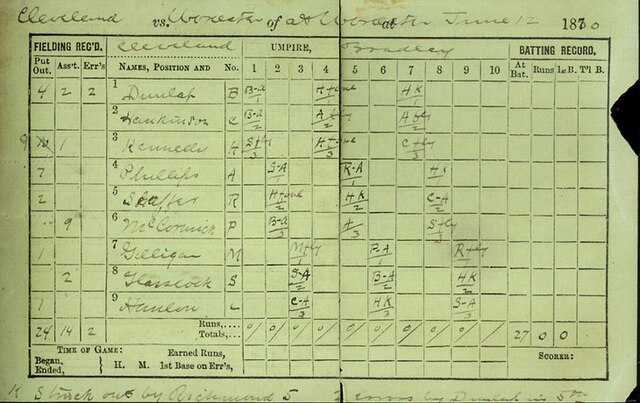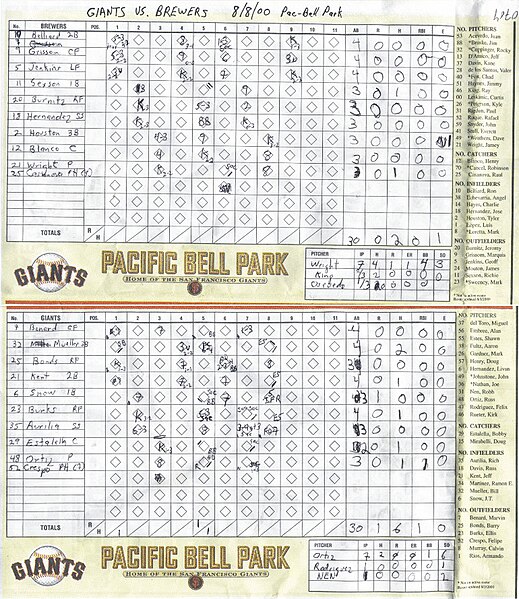Intentional base on balls
In baseball, an intentional base on balls, usually referred to as an intentional walk and denoted in baseball scorekeeping by IBB, is a walk issued to a batter by a pitcher with the intent of removing the batter's opportunity to swing at the pitched ball. A pitch that is intentionally thrown far outside the strike zone for this purpose is referred to as an intentional ball.
A catcher for the Mexican League's Rojos del Águila de Veracruz uses his glove to signal the pitcher for an intentional walk.
Photo showing pre-1920 catcher's lines
Baseball scorekeeping is the practice of recording the details of a baseball game as it unfolds. Professional baseball leagues hire official scorers to keep an official record of each game, but many fans keep score as well for their own enjoyment. Scorekeeping is usually done on a printed scorecard and, while official scorers must adhere precisely to one of the few different scorekeeping notations, most fans exercise some amount of creativity and adopt their own symbols and styles.
Scorecard for first ever MLB perfect game, by Lee Richmond, 1880. Abbreviations: A, B, C, for first, second and third, P and H for pitcher and catcher, S for shortstop, L, M, and R for left, center, and right field
Sample baseball scorecard from a game scored on August 8, 2000 at (then) Pacific Bell Park.




